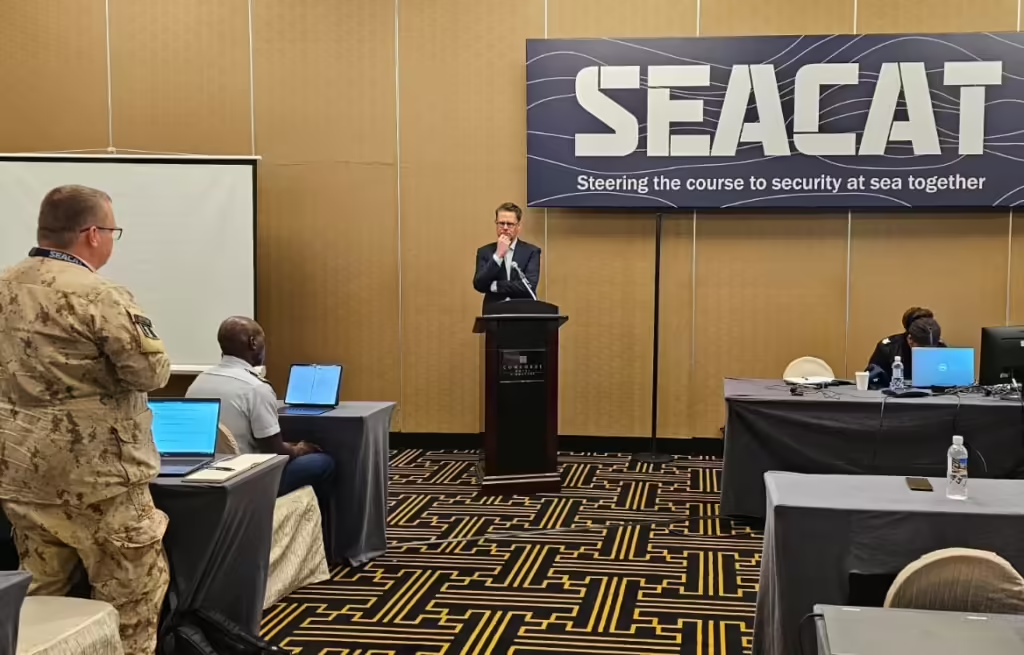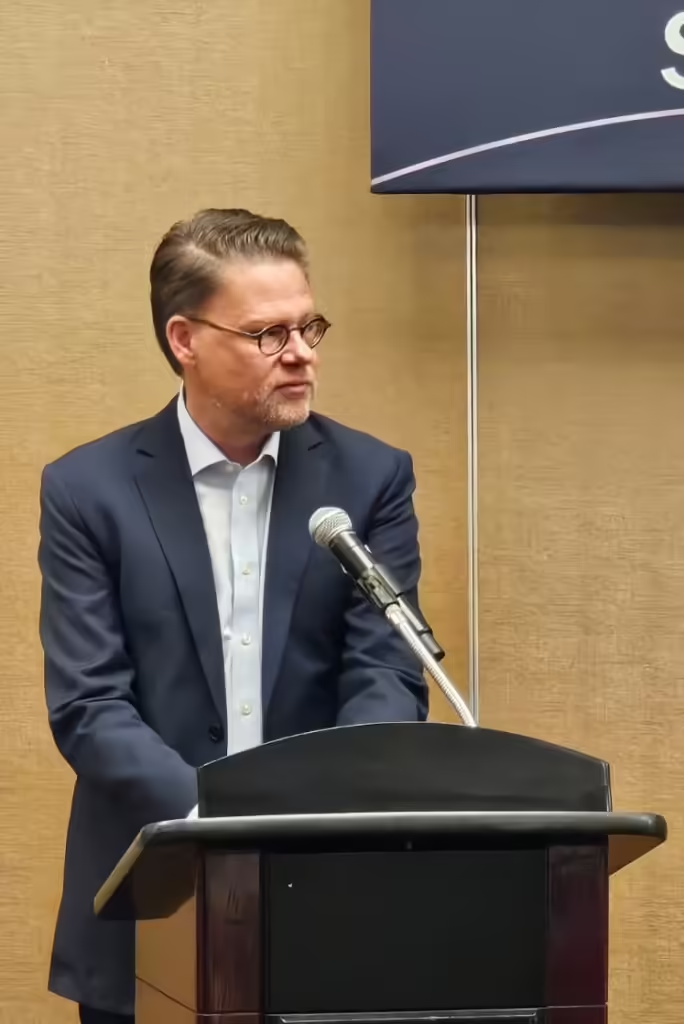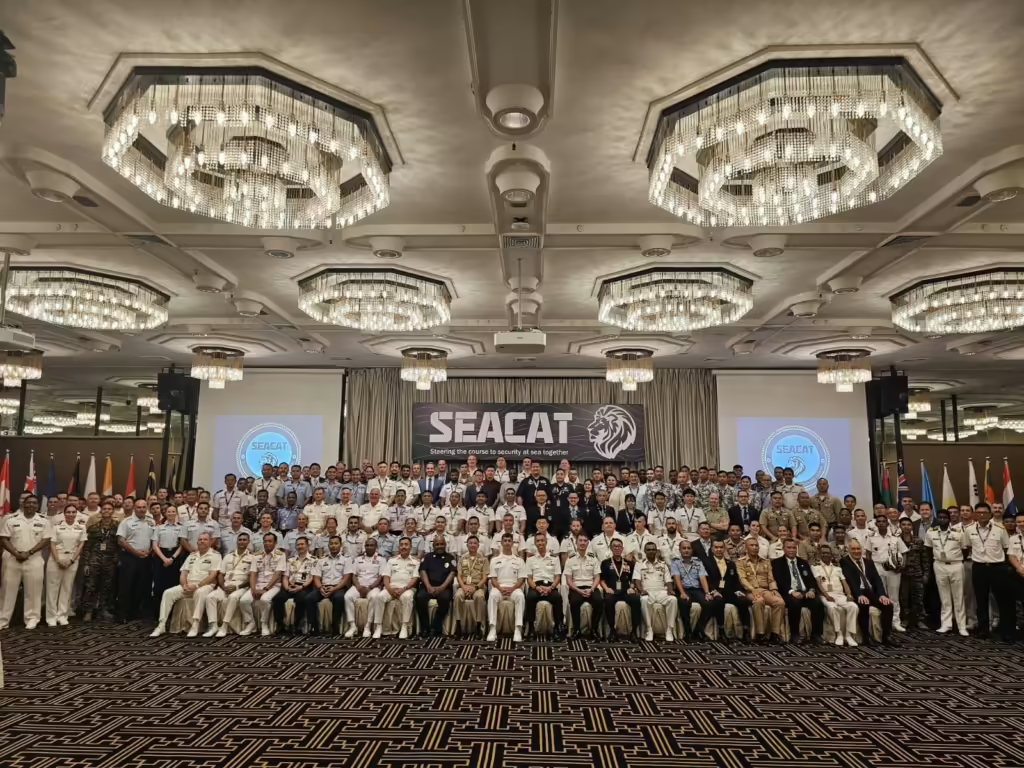Enhancing maritime domain awareness (MDA) is one of the corner stones of maritime security. Yet, it only works if countries develop a culture of sharing and collaboration across agencies and regional seas.
Practicing MDA through multi-national exercises is a key component of developing such a culture. As part of my ongoing research on the international practice of exercises, last week I had the opportunity to get some first hand experience of how the U.S. navy aims at advancing regional MDA . I participated in the exercise SEACAT 2024.
SEACAT is one of the oldest MDA exercises. Starting as a counter-terrorism exercise in 2002, it was focused on MDA through the 2016 Maritime Security Initiative, and was broadened to the Indo-Pacific in 2019. Over that history it has grown in size, with 2024 seeing more than 200 participants, including many from outside Southeast Asia. What happens at such exercises? What can be learned from them?



A larger report is in the making, yet here are some take away points:
🚩𝗜𝘁 𝗴𝗲𝘁𝘀 𝗺𝗼𝗿𝗲 𝗱𝗶𝗳𝗳𝗶𝗰𝘂𝗹𝘁 𝘁𝗼 𝗵𝗶𝗱𝗲. MDA systems have become more and more sophisticated. While the Automated Identification System (AIS) continues to be the baseline, in particular satellite data (optical and Radio Frequency emissions) rapidly changes what maritime activities are detected. Dark vessels engaged in illicit operations are easier to identify.
🚩𝗧𝗵𝗲𝗿𝗲’𝘀 𝗮 𝗽𝗿𝗶𝗰𝗲 𝘁𝗼 𝗽𝗮𝘆. The Seavision platform for data sharing, fusion and analysis by the U.S. Navy continues to be the most advanced MDA tool. Yet, access to the platform is controlled by the US and implies that the navy is able to listen. The alternative developed by the EU’s CRIMARIO II project is great for privacy in communication, but implies less data availability. Commercial platforms, such as the one by the New Zealand start-up Starboard Maritime Intelligence presented at the event are increasingly viable alternatives.
🚩𝗠𝗗𝗔 𝗶𝘀 𝗺𝗮𝗶𝗻𝘀𝘁𝗿𝗲𝗮𝗺. If ten years ago, significant efforts were required to explain why MDA matters and how it informs all levels of maritime security, today this is common wisdom. All countries of the region have made enormous efforts to organize their maritime security governance around dedicated MDA centers.
🚩𝗜𝗻𝗳𝗿𝗮𝘀𝘁𝗿𝘂𝗰𝘁𝘂𝗿𝗲𝘀 𝗮𝗿𝗲 𝗼𝗻 𝘁𝗵𝗲 𝗿𝗲𝗴𝗶𝗼𝗻𝗮𝗹 𝗮𝗴𝗲𝗻𝗱𝗮. Attacks on the North Stream and Baltic Connector pipelines, and the cable fault caused by the RubyMar in the Red Sea have brought much attention to critical maritime infrastructure protection in Europe and North America. SEACAT featured the theme prominently, which is an indicator that the threat to subsea cables, pipelines, and energy installations is now also taken seriously in the region.
🚩 𝗦𝗘𝗔𝗖𝗔𝗧 𝗶𝘀 𝗻𝗼𝘁 𝗼𝗻𝗹𝘆 𝗮𝗯𝗼𝘂𝘁 𝗠𝗗𝗔. What lasting impact exercises such as SEACAT have on the information actually shared is difficult to assess. Yet, the exercise has also other benefits, such as developing global maritime security priorities and vocabularies, mutual understanding and reassurance, signaling towards China, strengthening Southeast Asia’s centrality in the Indo-Pacific, and inter-personal networks which speed up communications and incident responses. Exercises are an important ingredient of what Tim Edmunds and I call in our book ‘informal maritime security governance’.
Pingback: Building regional maritime security expertise - event in Singapore - Christian Bueger